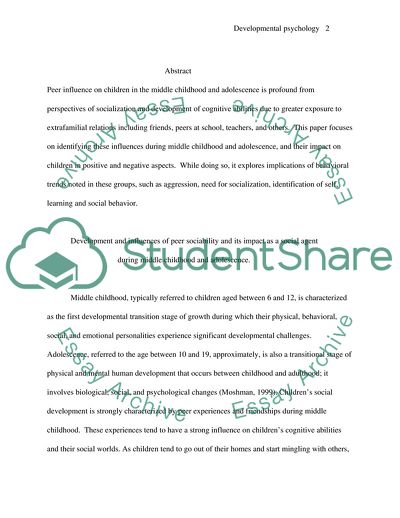Cite this document
(Development and Influences of Peer Sociability Assignment, n.d.)
Development and Influences of Peer Sociability Assignment. https://studentshare.org/sociology/1726498-developmental-psychologydevelopment-and-influences-of-peer-sociability-and-its-impact-as-a-social-agent-during-middle-childhood-and-adolescence
Development and Influences of Peer Sociability Assignment. https://studentshare.org/sociology/1726498-developmental-psychologydevelopment-and-influences-of-peer-sociability-and-its-impact-as-a-social-agent-during-middle-childhood-and-adolescence
(Development and Influences of Peer Sociability Assignment)
Development and Influences of Peer Sociability Assignment. https://studentshare.org/sociology/1726498-developmental-psychologydevelopment-and-influences-of-peer-sociability-and-its-impact-as-a-social-agent-during-middle-childhood-and-adolescence.
Development and Influences of Peer Sociability Assignment. https://studentshare.org/sociology/1726498-developmental-psychologydevelopment-and-influences-of-peer-sociability-and-its-impact-as-a-social-agent-during-middle-childhood-and-adolescence.
“Development and Influences of Peer Sociability Assignment”. https://studentshare.org/sociology/1726498-developmental-psychologydevelopment-and-influences-of-peer-sociability-and-its-impact-as-a-social-agent-during-middle-childhood-and-adolescence.


